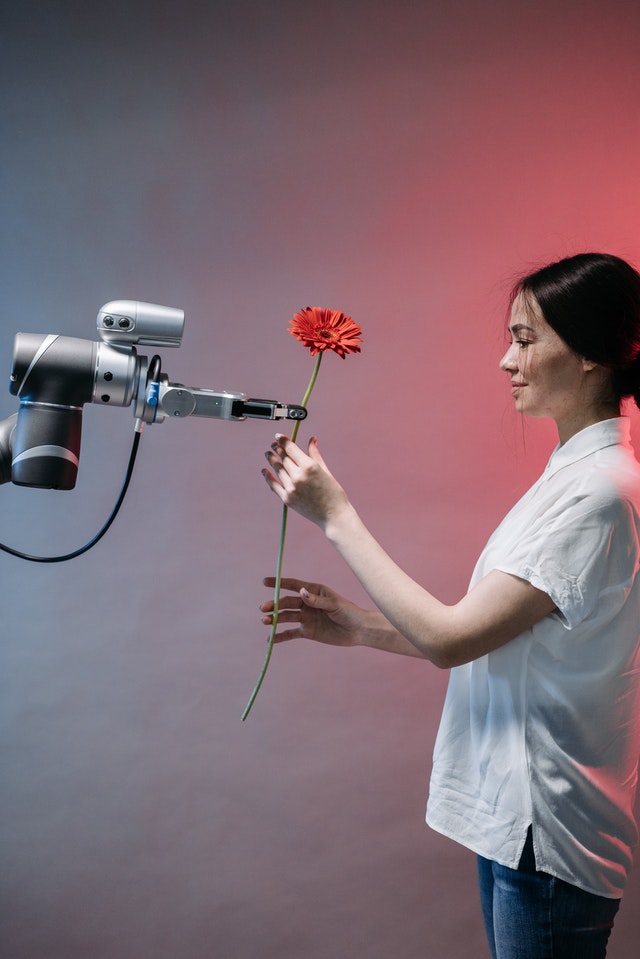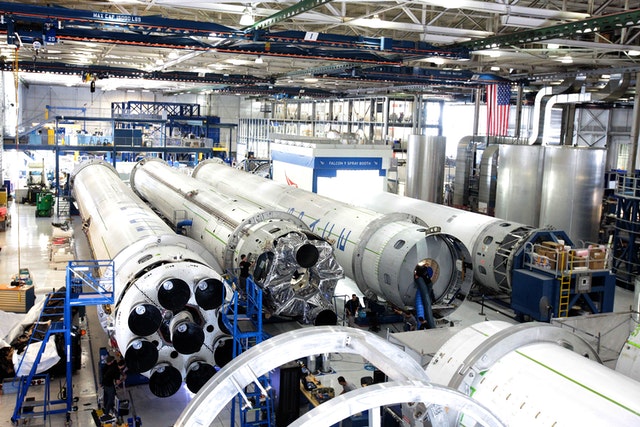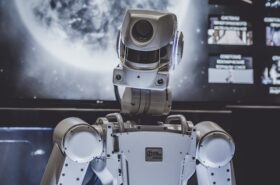
If you have been following the tech space for the past couple of years, you have probably come across several articles or videos about Artificial Intelligence (AI). AI is one of the most powerful technological inventions in the last 2 to 3 decades. For those hearing about this term for the first time, AI is simply the simulation of human intelligence processes by computers.
With AI computers are able to learn from the data provided to them in order to improve the way they do certain tasks. Some people often confuse AI with machine learning (ML). However, ML is a specific type of AI. It is a type of AI that enables software applications to become more accurate at predicting outcomes the more the data they are given.
There are a lot of practical applications of artificial intelligence that have impacted operations in almost every industry, including health, manufacturing, retail, and more. In this article, we will look at some of the most powerful AI use cases that have made it one of the best technological inventions in the last couple of decades. Let’s dive in!
Practical Applications of AI

When you first create a user account with Facebook and Twitter, your newsfeed will usually have generic content that is based on your friends or the people you follow. However, the more you use these platforms, the more their algorithms learn about your likes and dislikes. That is why they are able to show you content that you will most likely be interested in.
Search engines like Google also rank content based on the information they have about you. This is one of the reasons Google beats the likes of Bing and Yahoo when it comes to giving their users the most relevant search results. Google knows a lot more about its users than its competitors. Their other popular products such as Gmail, Maps, and Chrome have enabled them to gather enormous amounts of data that no other company has access to.
These ranking algorithms have greatly improved the user experience on social media and search. However, they also encourage people to use these platforms for many hours a day, which often leads to addiction. The good news is that most of the social platforms, including Facebook, Twitter, and Instagram allow users to turn on a chronological feed, so posts are arranged in order of time instead of arranging them based on interests.
Marketing automation and personalization

Another popular application of AI is in digital marketing. Most of the popular digital marketing tools now have AI and ML capabilities that allow them to make useful predictions and automate certain tasks. Sales and Marketing automation tools like HubSpot, Marketo, and Constant Contact all have AI capabilities that make the work of marketers much easier.
One of the best use cases of AI in these tools is lead scoring. With lead scoring, different prospects are given a score that indicates their likelihood of making a purchase. This score is based on their activities on the various business resources, including website applications, email, and more.
So, these tools will give you more accurate scores the more data they have about your prospects. This requires you to integrate them into all your digital assets so that they track the user behavior of all your prospects. At the end of the day, having more accurate scores will help you focus on potential customers that will most likely make the purchase.
Another crucial AI functionality in these tools is personalization. This is mainly applicable in email marketing. With personalization, every contact in your email list is sent an email that is drafted based on the data the software has about them. Personalized emails have greatly improved the open rate of emails and conversions. These tools are also able to predict the best time to send a certain prospect an email based on their previous behavior.
Natural Language Processing

The best use case of Natural Language Processing are the tools that convert spoken words into text or useful commands that can be used by a computer. There are so many use cases of Natural Language Processing (NLP). Some of the popular ones that you may probably know about include, the automatic generation of subtitles for movies and videos, translation, chatbots in customer support platforms, and more.
The most notable use case of NLP are the voice assistants on our phones. Those using Android have Google Assistant, Alexa, and Bixby if you happen to have a Samsung. iPhone users have Siri that is built in but can also download and use Google Assistant and Alexa. These voice assistants have further advanced ambient computing, a phenomenon that encourages users to give instructions to computers with fewer inputs.
It should be noted that not all languages are supported by these voice assistants. So, before using it in your local language, it is important to confirm whether the language is supported by the voice assistant you are using. Most of them support around 20 languages that usually include English, Chinese, Japanese, and most of the popular languages in Europe.
Self-driving cars

One of the most exciting applications of AI and Machine Learning is in the auto industry. Almost every major automotive brand has some form of self-driving functionality in their cars today. Each automaker may call their self-driving system a different name, but the concept is the same.
With self-driving, cars can automatically do some of the tasks on behalf of the drivers. Most of the current self-driving systems allow the car to steer, accelerate, change lanes, or brake automatically within its lane. These systems continue to get better the more the data they gather about the cars and the roads they are used in.
Most of these automakers pool together the data gathered by their cars in order to gradually improve their self-driving systems. At this point, Tesla is slightly ahead of the competition because they have more cars gathering the data that is required to improve self-driving. However, other automakers like Ford, Mercedes, BMW, and General Motors are starting to catch up.
It should be noted that we currently don’t have full-autonomous cars on the road yet. Most of the self-driving systems are still at level 3 and below. Getting to level 5 (fully autonomous) could take us a couple of years or even decades depending on how fast these companies innovate.
Risk assessment in banking and insurance

When signing up for an insurance policy or acquiring a loan in the bank, your service provider has to fully assess the risks of working with you. Initially, this was done by individuals who would manually put together data about a certain person in order to determine their credibility. This was however hectic, time-wasting, and most of the time not accurate.
With AI, all this has changed. Instead of using humans, computer systems can now gather data about someone from various sources to assess their credibility. The systems used to gather this data can also analyze it to give banks and insurance companies an accurate score of the person’s credibility. This reduces the time that would have been wasted trying to manually put all this data together before coming up with a conclusion.
Equipment maintenance in factories

Artificial intelligence and machine learning are used in factories to optimize the maintenance of equipment. These AI systems use real-time data to predict possible failures that could happen to certain machines. This data helps engineers to come up with corrective maintenance solutions ahead of time.
Instead of simply scheduling periodic maintenance, AI systems can also precisely recommend the appropriate time to do planned maintenance on certain machines. We also have more advanced AI-related technologies like Nvidia’s digital twins’ system that enable more accurate recommendations for maintaining equipment. Using AI in maintenance has led to improved uptime and longevity of equipment.
Personalized learning

Artificial intelligence is also being used in the education sector by personalizing learning for every student. Education platforms with AI capabilities can serve students with different capabilities, considers the knowledge gaps, and provides personalized learning recommendations, which in the end improves learning efficiency.
This system is way better than the traditional learning systems that use the one-size fits all model. With AI, each student is treated differently and is given the best possible conditions and information that suits their learning abilities. Some of the popular platforms that implement personalized learning include EdApp, Schoox, WalkMe, and WorkRamp.
Fraud detection

Another handy use case of AI is detecting fraud on platforms that involve the exchange of money. Platforms that use AI to detect fraud have Machine learning algorithms that can analyze thousands of transactions per second. These algorithms can learn about the long-term behavior of an individual on the platform.
If they detect any unusual behavior in the transactions of a given user, alerts are sent to the responsible parties for further investigation. PayPal is among the popular companies that are using fraud detection tools to reduce or possibly eliminate fraud on their platform. It has AI tools that compare millions of transactions and can precisely distinguish between legitimate and fraudulent transactions between buyers and sellers.
Detecting fraud manually is close to impossible since these platforms process millions of transactions every day. With AI-powered fraud detection systems, it is now pretty hard to do dubious transactions on these platforms.
Product recommendation

Just like content ranking algorithms on social media, platforms like Amazon, eBay, and BestBuy also have algorithms that recommend products to their different users based on behavior. For instance, if you often search for MacBooks on these platforms, they will start showing more Macs and other Apple-related products on your homepage.

So, you will notice that the more you use these platforms, the more they will learn about you hence making better product recommendations for you. Amazon also uses data from their other products, including Alexa to recommend products to their users. These recommendations can boost your shopping experience but could also drain your bank account if you are not disciplined enough.
Diagnosing diseases in hospitals

Another useful practical application of AI is diagnosing diseases based on the patient’s symptoms and the various tests made. Systems that use AI to detect diseases need to be given sufficient data about the patient to yield accurate results. This data may include their medical history, symptoms, and test results from the lab.
These systems also get better every day because they can access the data of thousands of patients who have similar conditions. This leads to more accurate diagnosis results. Stoke is among the fatal diseases that can now be quickly diagnosed with AI. When a patient that is suspected to have heard a stroke gets scanned, the scan data is analyzed by a computer system trained to analyze CT data, cutting the time to diagnosis and limiting brain damage.
Lots of other fatal diseases, including cancer and heart diseases, can be diagnosed using AI-powered systems. In addition to diagnosing diseases, AI tools can also be used to prescribe medication to patients based on several factors, including their age, medical history, gender, and more.
Final thoughts
There are many other use cases of artificial intelligence that we may not have covered in the above list. However, the ones we have shared are some of the practical ones that you will likely encounter in your everyday life. The common denominator across all the practical applications of AI is that more data yields better results.
You will notice that platforms with the most data have an advantage. For instance, Google Assistant is more reliable than Siri and Alexa at certain tasks because Google has access to more user data than Apple and Amazon. The same applies to social media ranking algorithms, search, and self-driving cars. Companies with more data often have better AI systems.



